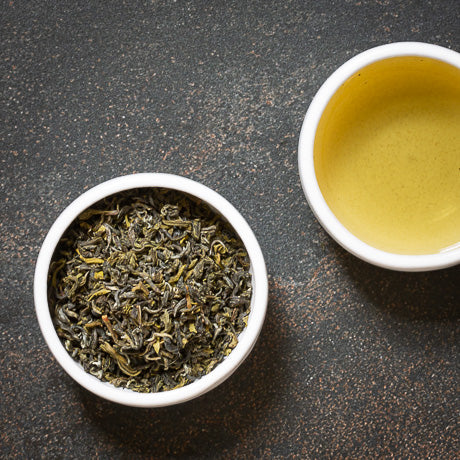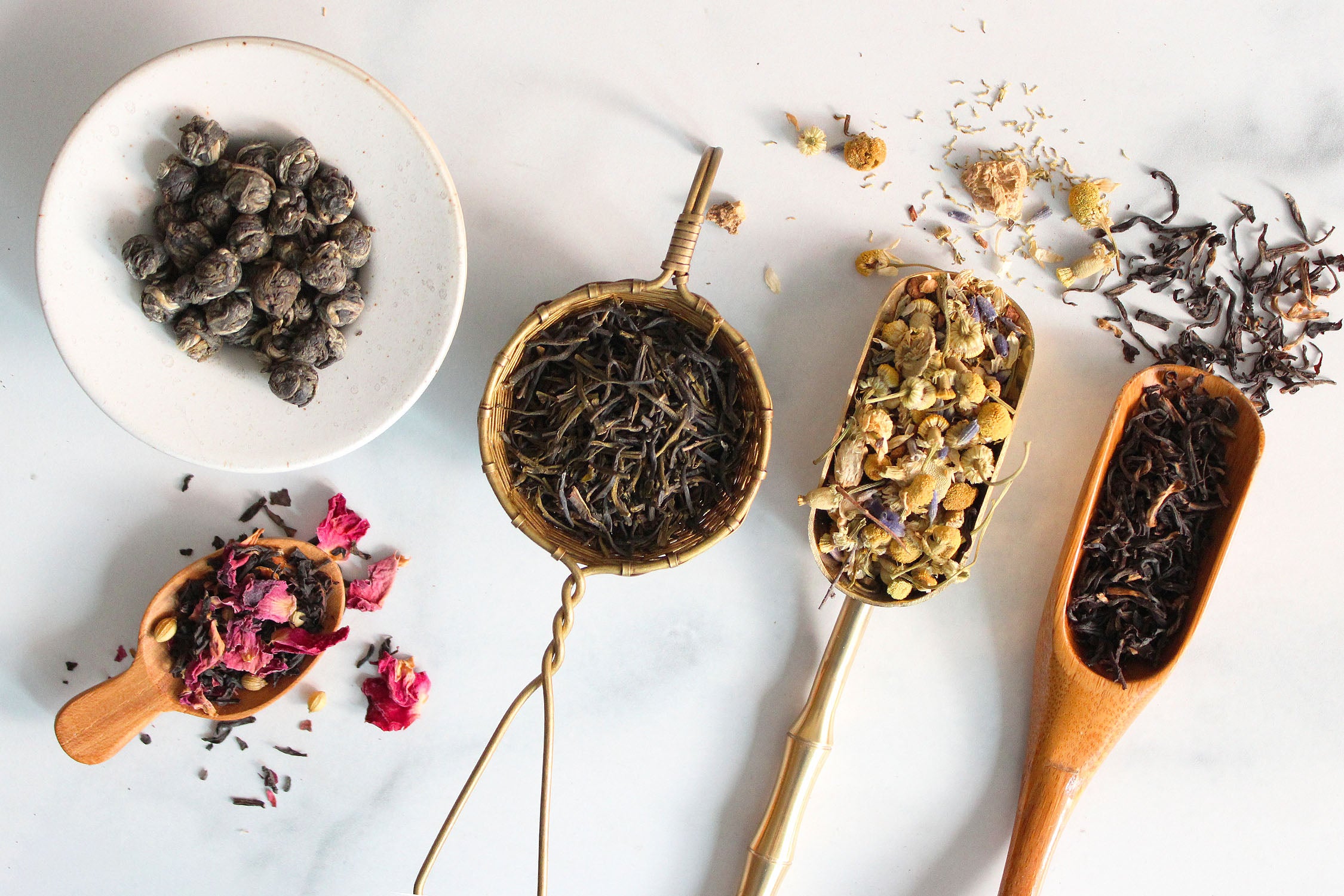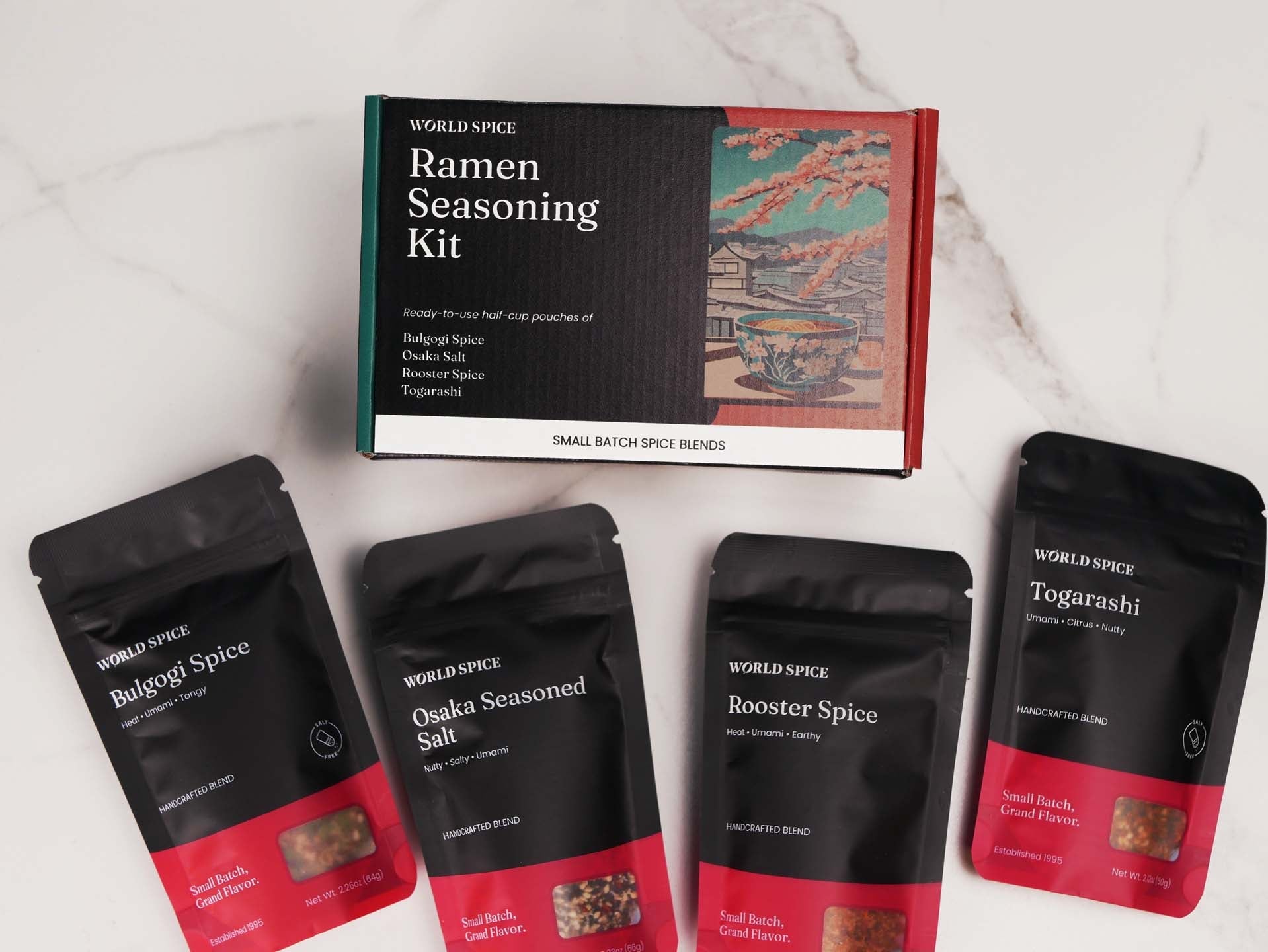Recipes
Crispy Tofu Salad with Turmeric Honey Ginger Vinaigrette
If you're not a fan of tofu, this salad may convert you. Tofu is a sponge and it takes on any flavor you marinate it in, so the right seasoning can totally transform this healthy protein. We spiced it up this time, and infused the tofu overnight in soy sauce, ginger, Korean Chile and garlic. The tofu then gets pan seared for crispy caramelized edges before adding it to the salad. A turmeric honey ginger vinaigrette dresses the peppery arugula and shaved carrots. A stunning garnish puts the final touch on this delicious dish. With a quick dusting of toasted sesame seeds and Pacific sea salt, the salad is complete.
Learn moreAsian Tea Glazed Duck Breast
This Asian Tea Glazed Duck Breast is the perfect dish to celebrate the Lunar New Year. The glaze is seasoned with our Asian Tea Rub, combining bold, pine-smoked Lapsang Souchong tea with hints of cinnamon, pepper, ginger, orange and brown sugar. The glaze is easy to put together and the sweet and smoky flavors are balanced with a bit of sour from tamarind paste. We served the duck on a bed of leek and celery root puree alongside crunchy fennel slaw. We were lucky enough to have a duck cooking coach on hand, thanks Scott! The result was a perfectly cooked breast with a thin and even layer of crispy fat on the outside. Follow the cooking instructions closely and you will enjoy the results. This meal will set the tone for a spectacular 2020. Happy New Year!
Learn moreBulgogi Orange Chicken
Bulgogi Orange Chicken is a sweet taste of Asian fusion combining classic Chinese orange chicken with our Korean inspired Bulgogi Spice. It's a sweet dish that heat lovers can always fire up at the table with a sprinkle of Rooster Spice, Korean Chile or the hot sauce of their choosing. The satisfying shell of sticky sauce that surrounds each moist nugget of chicken is so delicious you'll think the pros made it. Great for entertaining, the process is hands on at the start but then the chicken spends most of the time in the slow cooker with a quick finish on the sauce. That leaves plenty of time available for socializing before dinner. We added apple juice to the sauce for a traditional nod to the bulgogi.
Learn moreChow Fun - lemongrass sausage, pea vines, mint
Created by James Beard Best Chef-nominee Rachel Yang, who with her husband, Seif Chirchi, owns three restaurants in Seattle (Joule, Trove, and Revel) and one in Portland (Revelry). My Rice Bowl - Korean cooking outside the lines is a cookbook with recipes taken from her Korean upbringing, but then influenced by various cultures and cuisines that she's been exposed to from around the world. She has taken the food memories from her childhood in Korea and added the global flavors she loves, as well as the culinary influence from her previous restaurant work (Per Se, Alain Ducasse). This has resulted in a unique and authentic fusion of food. In My Rice Bowl, she thoughtfully combines different flavors together and results in making Korean flavors more accessible to everyone: “It’s all about how I kind of take my traditional Korean palate and knowledge and then how I make it my own here in America…We like to think of it as unexpected and delicious first, and Korean second (or maybe even further down the line).” In the cookbook you’ll find favorites like the restaurants’ kimchi recipe but, also dishes such as seaweed noodles with crab and crème fraîche, tahini-garlic grilled pork belly, fried cauliflower with miso bagna cauda, chipotle-spiked pad thai, Korean-taco pickles, and the ultimate Korean fried chicken (served with peanut brittle shards for extra crunch). This book exemplifies cross-cultural cooking at its most gratifying, such as this take on Chow Fun. From the lemongrass sausage to the pea vines to the fresh mint. It's sure to satisfy your stomach and dazzle your taste buds.From the author: "With their light texture, rice-based chow fun noodles (sometimes spelled shao fen) are a natural match for the springy, green flavor of home made lemongrass sausage. Tossed with a loose mint and cilantro pesto, baby peas, and pea vines, this Trove favorite is the antithesis of a heavy noodle dish. We top it with our version of togarashi, the traditionally Japanese spice mixture that we blend with dried orange zest, to add just a hint of heat.Look for the wide, flat chow fun noodles in the produce section or the refrigerated section of a large Asian grocery store. Although they're sometimes sold already cut into half-inch strips, look for the kind that are packaged uncut, so you can cut them yourself into slightly wider strips, if possible. (They're impossible to tear apart when cold. If you purchase them refrigerated, reheat them in the microwave for about ten seconds at a time, until the noodles are soft and pliable.)If you'd like to break up the work for this recipe, make the sausage, pesto, and togarashi up to a day before serving, and refrigerate the first two, covered, until ready to use. We always assemble each serving individually at the restaurant, but at home, it's easier to do in two big batches in a large wok, using half the serving ingredients for each batch."
Learn more









